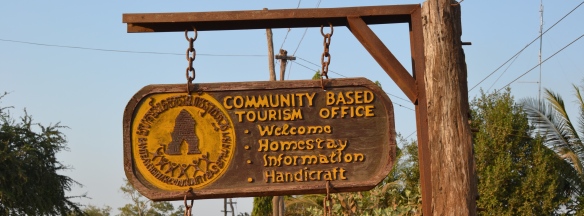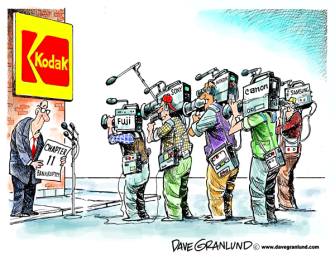 Ask many DMO leaders where they spend most of their time and budget security is typically at or near the top of the list. Whether it’s a fear of losing what they have or a quest for more, this is what keeps many a DMO leader awake at night.
Ask many DMO leaders where they spend most of their time and budget security is typically at or near the top of the list. Whether it’s a fear of losing what they have or a quest for more, this is what keeps many a DMO leader awake at night.
Starting this week I am beginning a series of postings on key DMO strategies for different budget challenges. Of course, every DMO and destination have different community and visitor economy profiles that makes the development of a standard set of a core strategies difficult. However just because a DMO has inherent budget limitations should be no excuse to be less remarkable. Today, I believe budget is less of a determinant of performance than ever before. In today’s hyper-connected flattened marketplace, ALL DMOs can be remarkable. The key is focusing on doing a few things REALLY well and having the courage to discard/ignore approaches that have hit their expiry date.
The Magic of Today’s Small DMO Opportunity
For small DMOs (defined herein as those having operating budgets of $USD 1 million or less), I believe these are the “best of times”. While iconic destinations will always have significant appeal, one of today’s most important visitor trends is the quest for a unique, authentic experience – and often this means a smaller, lower profile destination where people are seeking the ultimate travel driver – ESCAPE. This is the sweet spot for the small DMO.
And even though visitor economy competition has never been as intense as it is now, destination marketing professionals in small DMOs have never had access to so many powerful tools, rich visitor data and vast relationship networks than today – and most of them are free.
So with that as a set-up here are six core approaches and strategies for small DMO leaders (and even larger DMOs since the principles and data points remain the same for the most part):
Spend Your Time and Money Here:
- Engage Your Community as an absolute imperative. This is not about lobbying your local government/partners for money. This is about sharing a compelling story of why tourism matters to the average citizen and how they
 have the starring role in making it happen. With only a small budget, you need to inspire your community to be its biggest story-tellers and magic-makers. Visit local schools and business leaders. Ask them what they think makes your destination remarkable. Hold selfie contests. Crowdsource local photos and videos. Create a local tourism movement.
have the starring role in making it happen. With only a small budget, you need to inspire your community to be its biggest story-tellers and magic-makers. Visit local schools and business leaders. Ask them what they think makes your destination remarkable. Hold selfie contests. Crowdsource local photos and videos. Create a local tourism movement.
- Digital Domination: You don’t have the time or money for a multi-platform marketing assault so make your destination website your channel of first resort. In 2014, Google reported that 74%/77% of leisure/business travelers used the web as their primary source of travel planning and that 50%/54% respectively used their smartphones during their trip. Creating a responsive (mobile-friendly) SEO optimized, visitor-centric website that shares your destination’s story along with how and where to find it should be your DMOs primary marketing investment.
- It Takes a Village – Cultivate TripAdvisor engagement: Just because you say your destination is awesome does not mean potential visitors are going to believe you. But they do believe people who’ve been there, done that. And with a monthly audience of 375 million TripAdvisor is where people go to share and to explore. A December 2013 study by PhoCusWright indicated that 67% of travelers check TripAdvisor several times per month. You need to inspire your visitors to share their experiences and to coach your community to engage there. Contests and incentive awards work wonders…and the pay-off is HUGE.
Approaches and Strategies To Avoid:
- Printus Interruptus: Don’t pay to print anything. One of the sacred cows for many destinations is the visitor guide…but once it’s printed it’s out of date. Let someone who is in the publishing business do what they do best and manage this sacred cow. As a DMO fully-engaged with your community, you’ll be the one with the latest and the greatest experiences, sharing them with visitors on a timely basis via your digital channel of first resort along with your inspired community story-tellers.
- Avoid Temptation from “Mad Men”: Stay away from paid advertising. Your budget also will not allow you to hit frequency/reach critical mass to get any kind of audience recall traction. Besides, research continues to indicate that travelers increasingly rely the most on personal contacts for travel inspiration and that their trust in paid advertising continues to decline.
- Not Just Members Only: Many DMOs started as membership-models. And it worked in a pre-hyperconnected world. But as a small DMO you need to be seen as inclusive in your community, not exclusive. Potential visitors (particularly millennials) have decreasing trust in membership organizations as they have inherent biases and are perceived as not transparently supporting visitor needs. DMAI’s DestinationNEXT study actually found that almost one-third of existing member-based DMOs were looking to move away from the membership model over the next five years.
I know. Easier said than done. But for small DMOs, making just a few of these choices can result in significant performance results enhancements even though your resources are comparatively smaller. And as compared to larger DMOs and larger destinations, you can probably activate them much more quickly and consider their impact. That makes your sweet spot even more tasty.
Next week: What Would You Do With an Extra Million $’s?


